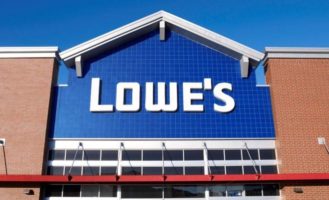

When it comes to steady dividend growth, dividend kings, 22 companies that have raised payouts for 50+ consecutive years, are standouts that generally mark a great place to start shopping for long-term income investments.
However, a problem that many dividend growth investors have is that most dividend kings are very slow growing companies with equally slow rising payouts.
Lowe’s Companies (LOW) is an exception with not only an impressive record of 54 straight years of increasing payouts, but also one of this group’s fastest dividend growth rates, 17.6% per year over the last three decades.
Better yet, Lowe’s appears to be well-positioned to continue growing strongly in the coming years, which would result in healthy total returns from this dividend king.
While Lowe’s yield isn’t great enough to consider the company in our best high dividend stocks list here, learn if Lowe’s might be a reasonable core holding for a long-term dividend growth portfolio, especially at today’s valuation.
Business Overview
Founded in 1946 in North Wilkesboro, North Carolina, Lowe’s is America’s second largest home improvement retailer, behind Home Depot (HD). It operates 2,365 stores in the US, Canada, and Mexico.
The company’s stores are famous for being a one-stop shop for both do-it-yourself (DIY) customers, as well as professional contractors, generally offering more than 35,000 products, including both well known national and exclusive brands.


Source: Lowe’s Investor Presentation
Business Analysis
The key to Lowe’s steady growth has been its strong long-term focus on strong customer service, which combined with its extensive base of conveniently located stores, economies of scale, brand recognition, and massive distribution channels creates a wide moat in an otherwise highly commoditized retail sector.
Smaller competitors are unable to match the broad assortment of inventory and in-store product presentations that Lowe’s can afford. They also have much less bargaining power with suppliers, making their products less price-competitive. Consumers have few reasons not to head to Lowe’s or Home Depot for their home improvement needs.
Lowe’s has also been improving its competitive positioning by investing more in technology and product presentation. Through the use of technology and helpful in-store displays and service, customers have even fewer reasons to try out competitors’ stores.
Combined with a relatively Amazon (AMZN) proof niche, Lowe’s has been able to avoid the kind of disruption that many traditional retailers are facing.
And thanks to the company’s aggressive investments into its online omni-channel sales platform (nearly half of company-wide capital expenditures going forward), this will likely continue being the case going forward.

Lowe’s largely Amazon-proof nature can be seen in the company’s impressive sales, earnings, and free cash flow (FCF) growth over the years.

Source: Simply Safe Dividends
Of course, that doesn’t mean that Lowe’s business isn’t cyclical, since home improvements generally track closely with the economy and thus resulted in flat or negative growth during the financial crisis.
However, the good news is that the economic recovery since the Great Recession has, though slow, been highly consistent and shows no signs of ending anytime soon.

And with the US housing market now having mostly recovered from its 2008-2009 collapse, this has resulted in steady sales improvements that have allowed management to focus on its long-term growth plans, which include steadily increasing economies of scale and rising margins and returns on shareholder capital.

Further good news is that, despite steadily improving profitability over the years, Lowe’s has a long way to go before its margins and returns on capital match its industry peers, especially Home Depot.















